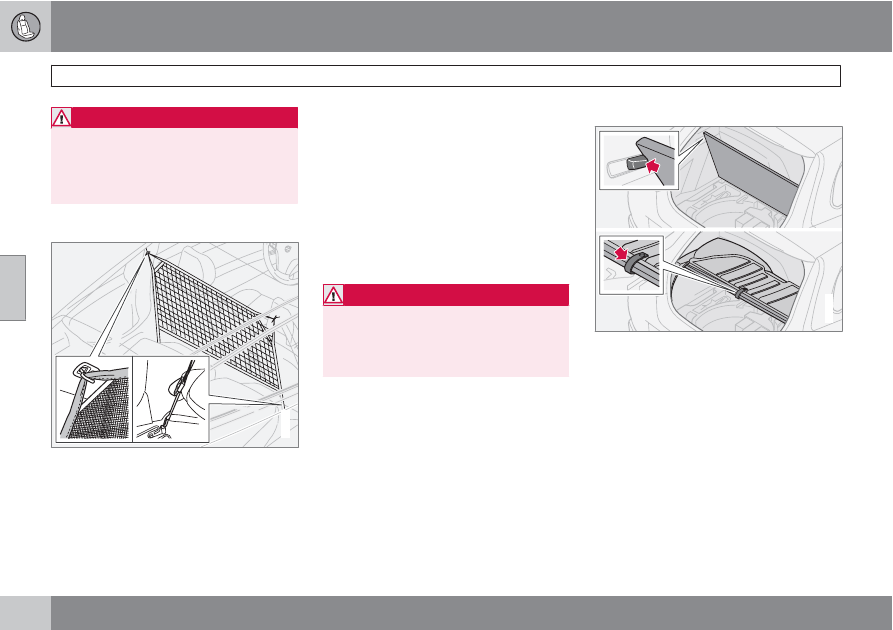Volvo C30 (2013 year). Manual - part 7

04 Interior
Cargo area
04
122
*
Option/accessory, for more information, see Introduction.
WARNING
The cargo area cover does not have a load
anchoring function. No item should be place
on top of the cargo area cover. These items
could move forward and cause injury during
braking.
Cargo area net*
G007603
The cargo area net can be placed behind the
front seat backrests.This net is only intended
to be used when the rear seat backrests are
folded down.
Installing the net
1.
Fold down the rear seat backrests (see
page 117).
2.
Attach the cargo net to the upper mounting
brackets near the ceiling.
3.
Attach the cargo net’s hooks in the eyelets
near the seat belts floor anchorages on
opposite sides of the vehicle.
4.
Pull the cargo net’s bands taut if neces-
sary.
WARNING
•
Be sure that the net is securely attached
in the mounting brackets and eyelets.
•
Cargo should be properly secured even
when the net is in use.
Removing the cargo net
1.
Release the pressure on the bands.
2.
Remove the hooks from the eyelets near
the floor.
3.
Remove the net from the ceiling mounting
brackets.
4.
Fold the net and keep it in its storage bag.
Folding up the cargo area floor hatch
G014316
Without the cargo area cover
Fold up the hatch and attach it to the latches
on both sides of the cargo area.
With the hard cover in place
1.
Fold up the hatch on the cargo area cover.
2.
Fold up the floor hatch and fasten it to the
hook on the underside of the cargo area
cover.